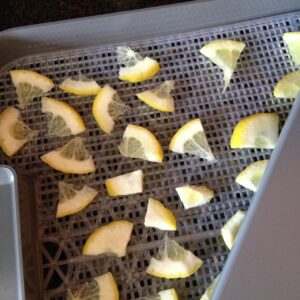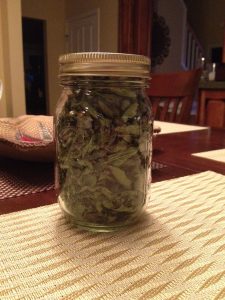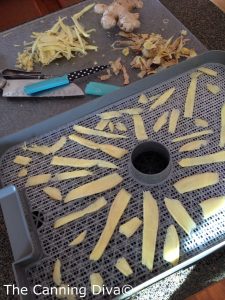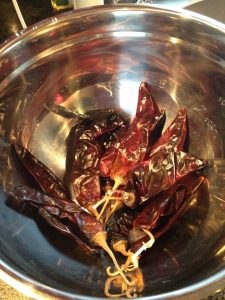Check this out!
September is National Preparedness month! I had a great time at Rylee’s Ace Hardware this past weekend sharing dehydrating tips with customers interested in preserving food in the event of a disaster. Here is a recap of my demonstration on Food Dehydrating…
Dehydrating food is about being prepared! When you dehydrate foods you are able to maximize the shelf life of many products, thus preparing yourself and your family in the event of an emergency.
Dehydrating has been a food preservation practice for thousands of years, dating back to at least 12,000 BC.The Romans and Middle Easterners would dry fruits and vegetables in “still houses” which would use a fire to dry out and smoke foods.
Modern day dehydration isn’t that complex. Machines circulate hot and dry air across the food. This removes much of the water. The moist air is then dried so that water continues to be removed. The temperatures are high enough to remove water but not high enough to cook the food. Dehydrated food is usually withered and harder.
If a natural or human-caused disaster strikes your community, you might not have access to food, water, and electricity for a while. By taking steps now to store emergency food and water supplies, along with a disaster supplies kit, you can reduce the effect of any such disaster on your family.
Most important, you should have enough food and water on hand to survive, at minimum, two weeks in the event of a disaster. It is suggested you store foods you eat regularly and to store foods that require no refrigeration, preparation or cooking. It is also important during a disaster to keep vitamin, mineral and protein supplements on hand to ensure you receive the proper nutrition.
The benefits of utilizing dehydrated food during a disaster are:
- Nutritional value is still high
- Reduce spoilage
- Increase a food’s storage life
- Require little or no specialized storage requirements
- Reduced weight making food easier to transport
Essential Equipment
- Air tight containers
- A blanching basket or colander for “checking” foods
- Fine-mesh tray liners
- Parchment paper – in place of specialized leather sheets
Optional but Helpful Equipment
- Food Processor
- Jerky Gun
- Mandolin
- Grater
- Salad Spinner
Four Key Factors to Proper Food Dehydration
- Time
- Temperature
- Air Speed (velocity)
- Raw Food Preparation
How do you know the foods are properly dehydrated?
Some foods it is difficult to determine whether or not it is completely dry. It is suggested you break or tear a piece open and squeeze the flesh. No liquid should come to the surface of the tear. If there is moisture inside, return the food to the dryer. It is better to OVERDRY than underdry. Underdrying will lead to spoilage because bacteria which rots food requires moisture to do so.
Proper Storage
Keep food in a dry, cool spot—out of direct sunlight. Optimal storage temperature should be 50 to 70 degrees. Exposure to heat and sunlight will cause condensation which bacteria require to feed therefore spoiling the foods.
Wrap perishable foods, such as cookies and crackers, in plastic bags and keep them in sealed containers.
Utilize glass screw-top jars and/or airtight containers to keep them fresh and unspoiled.
Utilize food-safe moisture and oxygen absorbers to extend the storage life and prevent food spoilage. Air carries moisture not to mention may cause reactions to the foods flavor and coloring.
If utilizing Ziplock storage bags, follow these steps:
- While filling with dehydrated foods, insert a straw ensuring it sticks out above the sip-lock seal
- After filling, remove and much air by hand
- Seal the zip-lock on both sides of the straw
- Using your mouth, suck remaining air out of the bag
- Quickly remove straw and finish sealing the zip-lock
Reconstituting Your Dehydrated Foods for Consumption
Many dried foods are typically eaten in their dried form such as banana chips and apple rings. Other foods such as potato hash and tomatoes reconstitute best when soaked in boiling or very hot water for 10-12 minutes. Other foods can simply be rehydrated by setting in temperate water and then using in meal creations or served as is.
Sources: http://www.bt.cdc.gov/preparedness/kit/food/
The Dehydrator Bible by Jennifer MacKenzie, Jay Nutt & Don Mercer
The Canning Diva – www.canningdiva.com


